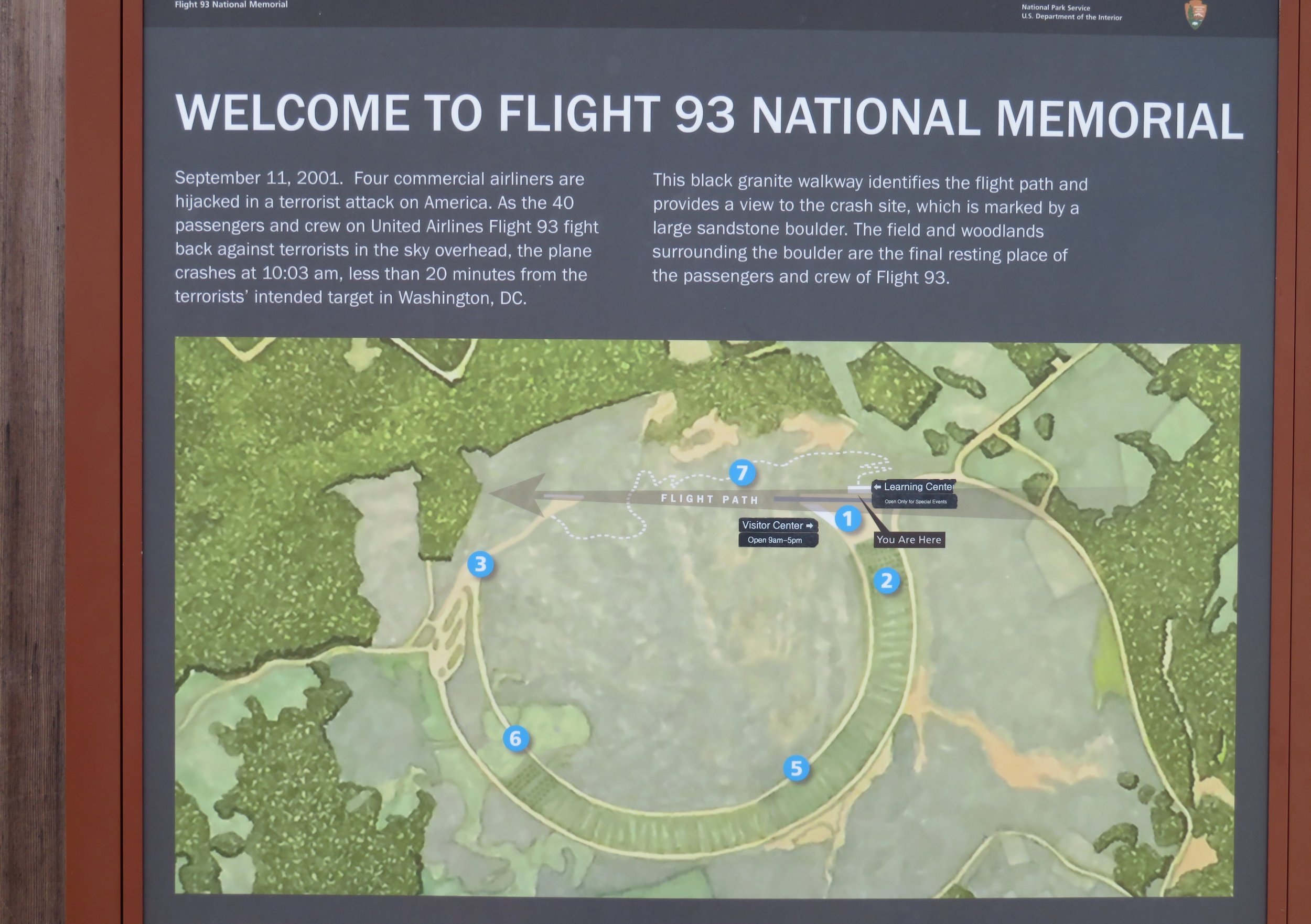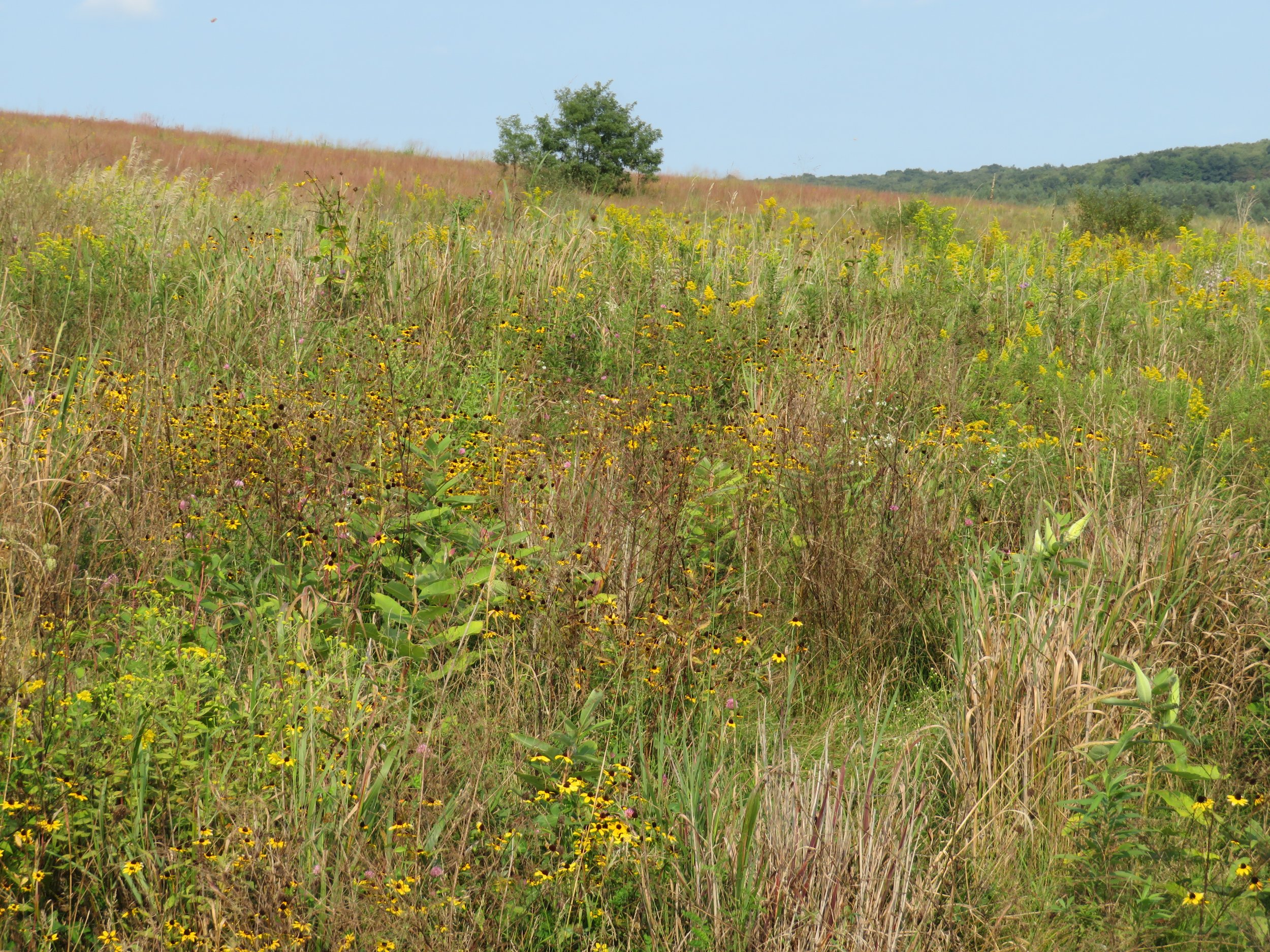Flight 93 National Memorial
/“It was a beautiful September morning with a blue sky… just a normal day.”
-Joy Knepp, teacher, Shanksville-Stonycreek School
I originally intended to combine our visit to the Flight 93 National Memorial with other things we’ve been doing as we traveled back to Ohio. After visiting, I felt it would be irreverent, inappropriate, and just plain wrong to talk about our visit there midst other activities. It was one of the more emotional visits we’ve ever experienced akin to the Oklahoma City National Memorial or the U.S. Holocaust Memorial Museum. It deserves its own space.
Just off US-30 on the site of an abandoned coal mine, the Flight 93 National Memorial sits peacefully in the Pennsylvania countryside. Like the seemingly ordinary, beautiful September day back in 2001, the sky was blue and cloudless. The parking lot contained a lot of cars and there were lots of people around, but the place was quiet… uncommonly so for such a crowd of visitors. People spoke in soft, low, muted voices. There was no laughing, no kids running around, no yelling to get someone’s attention. It was a somber, respectful crowd well aware of what they would see or what they had just seen. What some remembered and what some learned about in history class was an event that had occurred over two decades ago.
Do you remember where you were when you heard the news of 9/11? It was our first year aboard Nine of Cups and we were anchored in the harbor at Newport, Rhode Island. My sister, Lin, called just before 9AM to tell me a plane had accidentally crashed into the World Trade Center North Tower. While we were talking, the news broke that a second plane had crashed into the South Tower. It was no longer accidental, it was intentional. We dinghied into shore and found a bar that had a TV tuned to the news. We sat there for hours and listened in horror as we learned of the four hijacked planes. It’s not something that’s easily forgotten.
UA #93 left Newark Airport late, bound for San Francisco with 40 passengers and crew. Over eastern Ohio at 9:28 am, four hijackers seated in first class attacked, incapacitated the captain and first officer, and headed the plane towards Washington, D.C., the US Capitol their most likely target. Just before 10 am, the plane was tracked flying low and erratically over southwestern Pennsylvania. It crashed at 10:03 am, upside down, at 563 miles per hour into a field.
From the moment we arrived at the memorial, emotions ran high. How could they not? Huge 40+ foot tall concrete walls towered above the black granite Flight Path Walkway that led us to the Visitor Center. The flight numbers and crash times of each of the four flights are etched into the walkway.
The Visitor Center provided much more information than we’d previously known about this specific flight. No photos were allowed inside. The major network newscasts from 9/11 ran on an endless loop. People watched with rapt attention, recalling the horror of the day.
One wall provided a full-sized replica of the seats in the aircraft. Several passengers had made calls prior to the crash and a recording of the messages left on answering machines was available. We picked up a phone and listened. A woman called her husband saying there were ‘problems’ aboard, but not to worry. A woman called her sister, crying in fear and terror, saying she’d miss her, but providing the combination to her safe so her sister would have access. A flight attendant called her daughter and telling her she loved her. It was overwhelming. I was embarrassed that tears were freely streaming down my face. I looked at David and he, too, was crying. Then I looked around. There weren’t many dry eyes nearby.
One area explained that the passengers had voted to overtake the hijackers. They had already had news of the other three hijackings and knew the anticipated outcome. Wth little chance of surviving themselves, they decided to rush the cockpit. The hijackers knowing they would be overtaken in a matter of seconds, turned the plane upside down and crashed into the field. The plane was only 18 minutes from D.C. when it crashed. A photo of each passenger and crew member was on display extolling the courage and determination they exhibited that day. Of the four hijacked flights on 9/11, UA #93 was the only one that did not hit its target.
Walking out of the Visitor Center into the bright September day, we caught our breath and walked the wildflower-lined path to the Memorial Plaza and crash site. Once the site of an ugly, abandoned strip mine, the area has been repurposed into a beautiful memorial. Just a few days before, a ceremony had taken place here to commemorate 9/11 and pay homage to the passengers and crew.
We’ve read that many Americans knew of someone that died on 9/11. We’d made an appointment for a marine survey in Bristol, RI the following week, but the surveyor never showed. Irritated, we called to find out why he had bagged us. David spoke to his daughter on the phone. Ralph Kershaw, 52, was one of the passengers aboard United #175, the second plane that crashed into the World Trade Center killing all 65 people aboard including the five hijackers. When we saw the white marble Wall of Names commemorating those who had died aboard UA #93, we remembered that phone call all too well.
A sandstone boulder sits in a field and marks the impact site of the plane and the final resting place of the crew and passengers of Flight 93.
It took awhile to regain our composure. The 2-mile walk gave us time to consider what we’d seen and experienced.
As we exited the memorial, we stopped at the Tower of Voices. From the NPS website we learned that the 93’ tall structure was conceived as a monumental musical instrument holding forty wind chimes representing the forty passengers and crew members. The intent was to create a set of forty tones (voices) that serve as both a visual and audible reminder of the heroism of the forty passengers and crew of United Flight 93.
We’ll be in Ohio next. Join us as we cycle more of the Great American Rail-Trail… the GART.










